A public anti-litter education campaign to recycle plastic and glass containers is an integral part of the Marine Litter Action Plan presented by the Department of the Environment at the Radisson Fort George Hotel in Belize City on Wednesday, September 4.
Styrofoam food containers are already being phased out, and a ban on non-biodegradable plastic bags, single-use bottles, and food containers was passed into law on Earth Day, April 22 this year. The ban is expected to take full effect by the end of this year, and the Commonwealth Litter Programme (CLiP) is helping the DOE to address the problem of marine plastic litter.
DOE’s Maxine Monsanto presented the action plan, which calls for a public-private sector partnership as both the DOE and the tourism sector recognize that tons of non-biodegradable plastic litter floating up on Belize’s beaches are an eyesore, which is degrading our tourism product, and detracting from our claim of being a pristine, environmentally friendly destination for visitors. An important private sector partner is Bowen & Bowen, which already has a bottle recycling program in place for both its plastic and glass bottles, and the plan is for other bottlers and importers to do the same.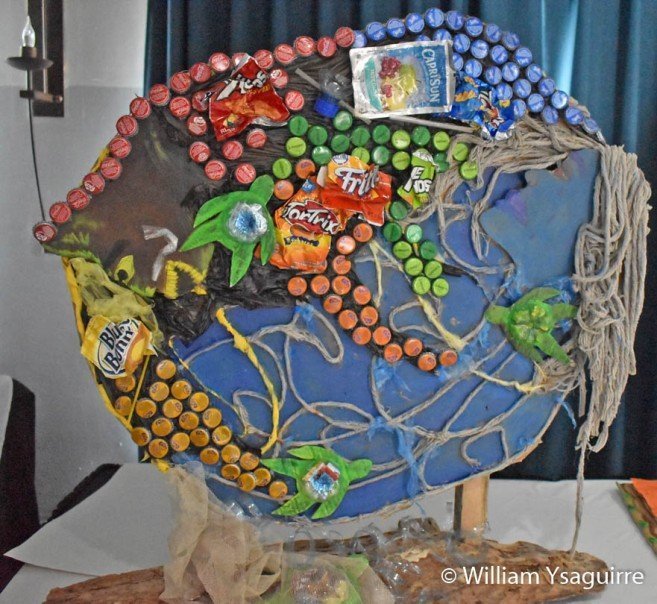
Celia Mahung of the Toledo Institute for Development and the Environment (TIDE) explained that the education campaign organized an art competition in which primary and secondary school students from around the country participated, and the winners were awarded at the launch ceremony. “Bottle Art” from the Cayo district took first prize in the primary school category, created by a team comprising Addriana and Kenneth Mayen and Michael Cowo of Faith Nazarene School, Benque Viejo, Dulce Galvez of Sacred Heart RC Primary and Evlyn Tun of St. Andrew’s Anglican Primary of San Ignacio. Khadija Cayetano of Little Flower RC School, Forest Home, Toledo, took the second prize with her work: “Stuffed Hiccattee”. CLiP’s principal investigator Thomas Mafes, a marine litter scientist with the Center for Environment, Fisheries and Aquaculture Science (C.E.F.A.S.) presented the prizes.
“Losing the Battle,” an angle fish sculpture created from plastic debris by jasmine, Andrew and Amaia Faber, won first prize in the high school category. “Refuse, Reuse and Recycle” was the theme chosen by the second prize winners Verule Garcia and Tayana Olivera of the Toledo Community College for their artwork: “The 3 R’s Project”.
Jolie Pollard of Placencia won the innovation competition with her all-organic, new hair treatment formulation: “IKOOMA,” created from all-natural Belizean ingredients.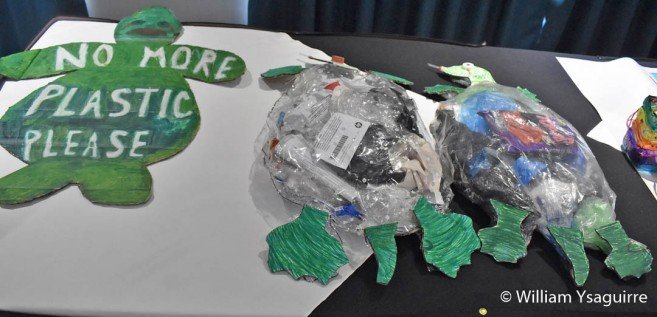
A DOE survey conducted at six beaches in June and July this year found that the top ten items included aluminum foil pouches for juices and sauces, paper and cardboard items. Some 70% of the trash fell into six major categories: 36.8% of the litter was small bits of plastic less than two inches in diameter. Another 12.3% was pieces of Styrofoam and polystyrene; while bottle caps and lids presented 9.3%. Shards of broken glass bottles were 5%, plastic water bags were 3.4%, and candy bar wrappers and plastic bags for chips were 3.4%. Not all the packaging came from products sold in Belize, but the plastic trash of Belizean origin included water ideal bags, plastic water, and juice bottles, plastic shopping bags, chips bags, and candy wrappers, and other plastic bags and Styrofoam containers.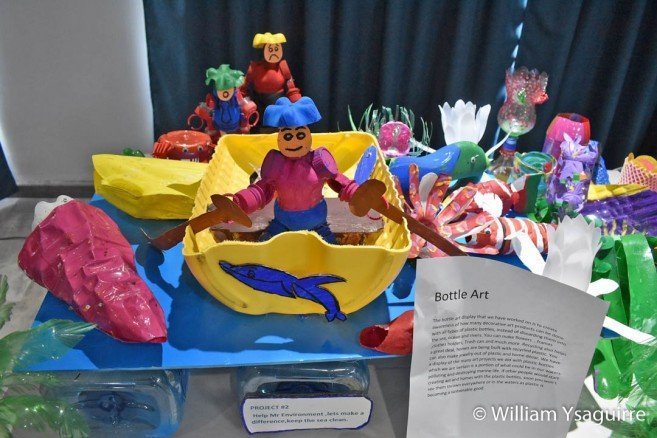
It’s important to recycle as much as possible, to conserve space and extend the life of the existing national landfill waste disposal site at mile 26. Present data indicates that the landfill site will be filled by the year 2063, at the present rate of generating waste and including a collection of trash within a 10-kilometer radius of each municipality. The site may become filled even earlier, by 2050, if waste production continues to grow.
Belizeans need to be educated, for households to separate organic matter – food, paper and cardboard at source, possibly to use as compost in home gardens, since this material dominates the volume of waste collected. Plastics are the second largest component by weight in the trash collected, so phasing out single-use plastic items will help to reduce the volume of garbage going into the landfill.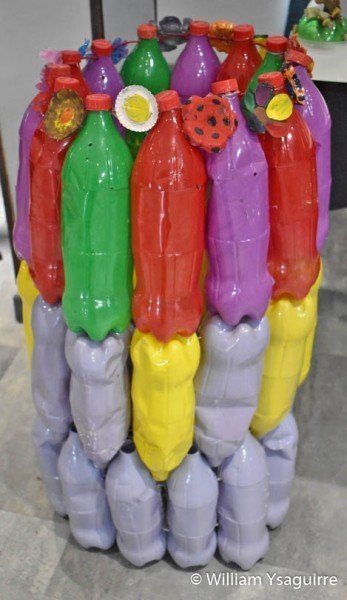
Belize held a high-level conference with other CARICOM countries participating in the CLiP Programme at the Belize Best Western Biltmore Hotel in Belize City on Thursday and Friday, September 5th and 6th, where DOE’s Action Plan was presented as an example of the way forward.
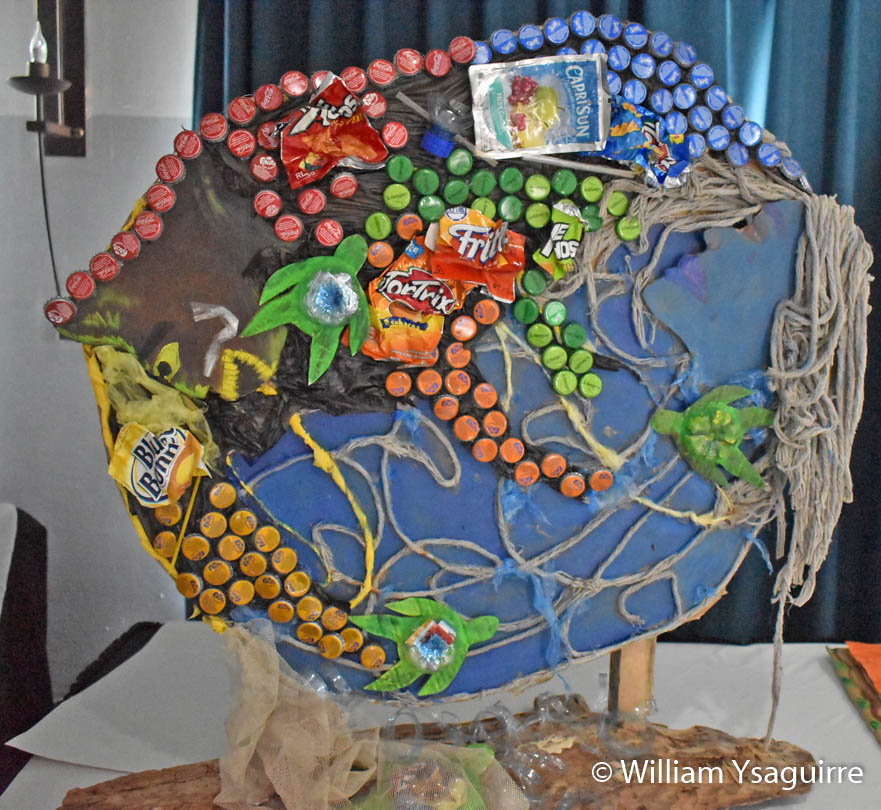
Share
Read more

